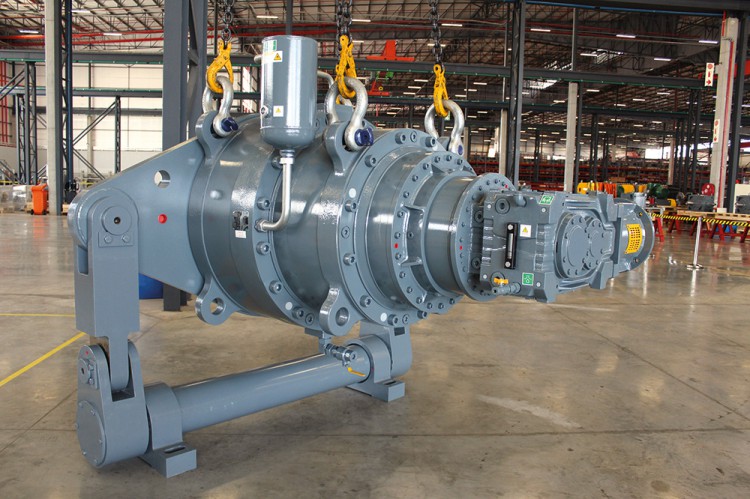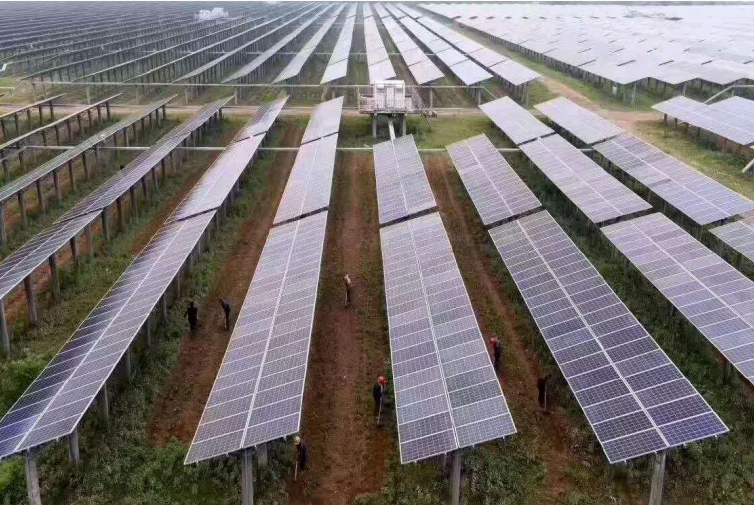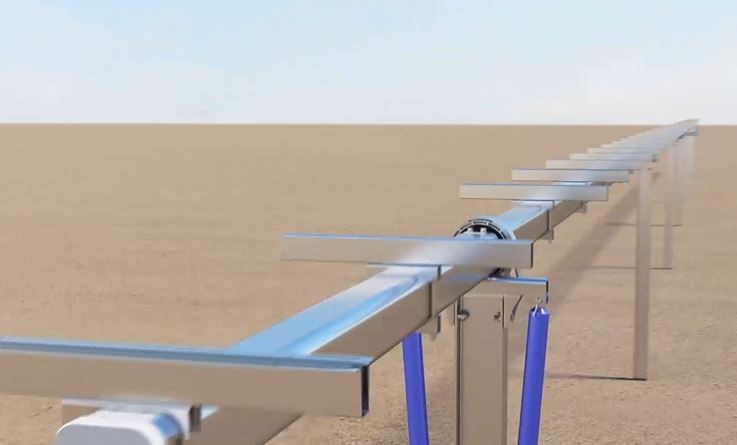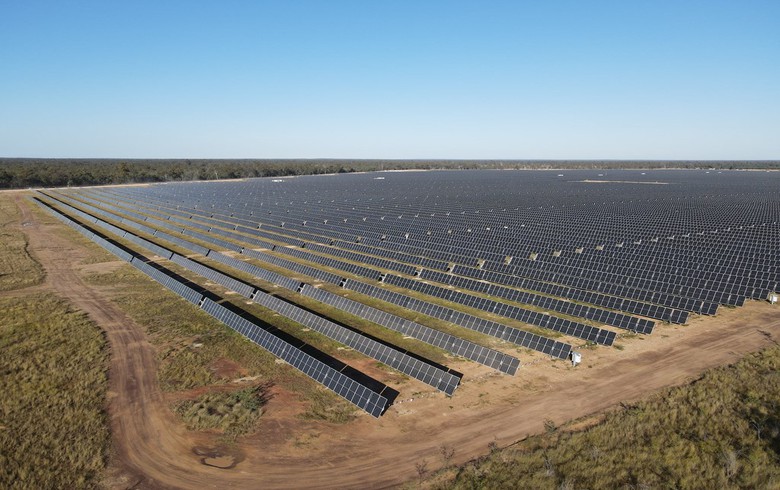The novel offshore FPV system named HelioSea leverages the combination of two distinct elements: a dual-axis solar tracker, maximizing solar energy generation, and a TLP, said to ensure structural survivability, offering a stable platform and simplifying towing and installation.
The device is currently in its early stages of development, corresponding to a technology readiness level (TRL) of 2 to 3.
The proposed TLPs consist of a mast or pole and four pontoons connected to the sea bottom through the corresponding taut mooring lines (the legs). Although previous research on offshore wind technology indicated that TLPs might entail a more complex installation process compared to alternative platforms such as semi-submersibles, there is an anticipated lower LCOE, the researchers said.
According to the research done by the University of Oviedo, the TLPs present a series of advantages when compared to other offshore platforms, they are mobile and reusable, have minimal vertical motion, have low increase in cost with an increase in water depth, deepwater capability, and low maintenance cost.Solar Damper,Lithium battery,Solar tracker actuator,Solar Tracking Controller,NMRV Series Worm Gear Reducer,Planetary gear motor,
In terms of disadvantages, more relevant ones include high initial cost, high subsea cost, fatigue of tension and difficult maintenance of subsea systems.
Furthermore, the HelioSea system maximizes the energy yield for a broad range of conditions and scenarios by combining tracking and bifacial panels. Future standardization and industrialization are expected to reduce the manufacturing costs of both technologies and, subsequently, the LCOE of HelioSea.
The dual-axis trackers are said to maximize the amount of direct normal irradiance (DNI) striking the front of PV arrays throughout the year, which results in an increased annual energy yield and a smoother power output throughout the day.
The TLP and the top-of-pole mount can be fabricated separately and joined at the dockside before being taken offshore. Unlike offshore wind turbines, which require fabrication in port facilities, the reduced dimensions and the rigid design of the system enable land transport from workshops outside of port facilities, the University of Oviedo said.
Once at port, HelioSea units are transported to the project site for installation. Conventionally, ballast water is used to increase the overall weight of TLPs, facilitating towing and anchoring operations. Before anchoring, the tendons are fastened to a foundation on a prepared seabed. Subsequently, de-ballasting is carried out to establish the necessary net buoyancy and tension in the tethers.
According to the researchers, this conventional installation process might present challenges due to the inherent free-floating instability associated with TLPs, however, the reduced dimensions of HelioSea allow for consideration of shipping on a small-sized barge instead of towing, and alternatively, the technology can leverage procedures proposed for other TLPs. Regardless, conventional resources including small tugboats, cranes, and/or barges are required for commissioning, potentially resulting in significant cost efficiencies and simplification of marine operations.
“HelioSea, a novel floating concept for harnessing solar energy offshore, combines two key features: a dual-axis tracking system and a TLP. Although the former is a technology that has been commonly applied in GPV installations, the TLP has never been proposed before in the design of FPV systems. This design seeks a dual objective: maximizing the electricity generation and providing a reliable structure to survive the challenging marine environment,” the research writes.Solar Damper,Lithium battery,Solar tracker actuator,Solar Tracking Controller,NMRV Series Worm Gear Reducer,Planetary gear motor,
“HelioSea introduces distinctive features, facilitating the transition of FPV technology to offshore environments. While recognizing areas for improvement, the promising results justify additional exploration through numerical and experimental techniques. Subsequent efforts should focus on optimizing geometry, materials, and energy costs, encompassing a broader range of environmental conditions, utilizing advanced numerical tools, and adhering to standardized structural assessments.”Solar Damper,Lithium battery,Solar tracker actuator,Solar Tracking Controller,NMRV Series Worm Gear Reducer,Planetary gear motor,
 Revolutionising sugar mill efficiency: Mill Gears unveils world’s largest gearbox
Revolutionising sugar mill efficiency: Mill Gears unveils world’s largest gearbox
 who are the leaders in solar trackers for the power industry?
who are the leaders in solar trackers for the power industry?
 Trina releases new version of Vanguard 1P solar tracker
Trina releases new version of Vanguard 1P solar tracker
 GameChange Solar Tests Tracking System for 40-Year Lifespan
GameChange Solar Tests Tracking System for 40-Year Lifespan